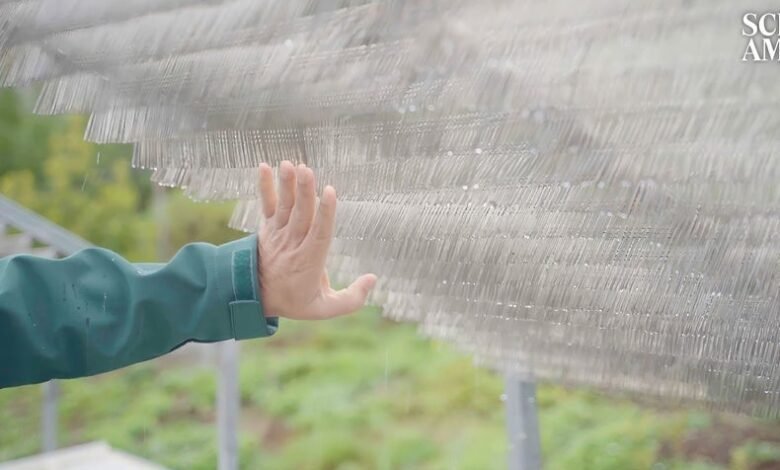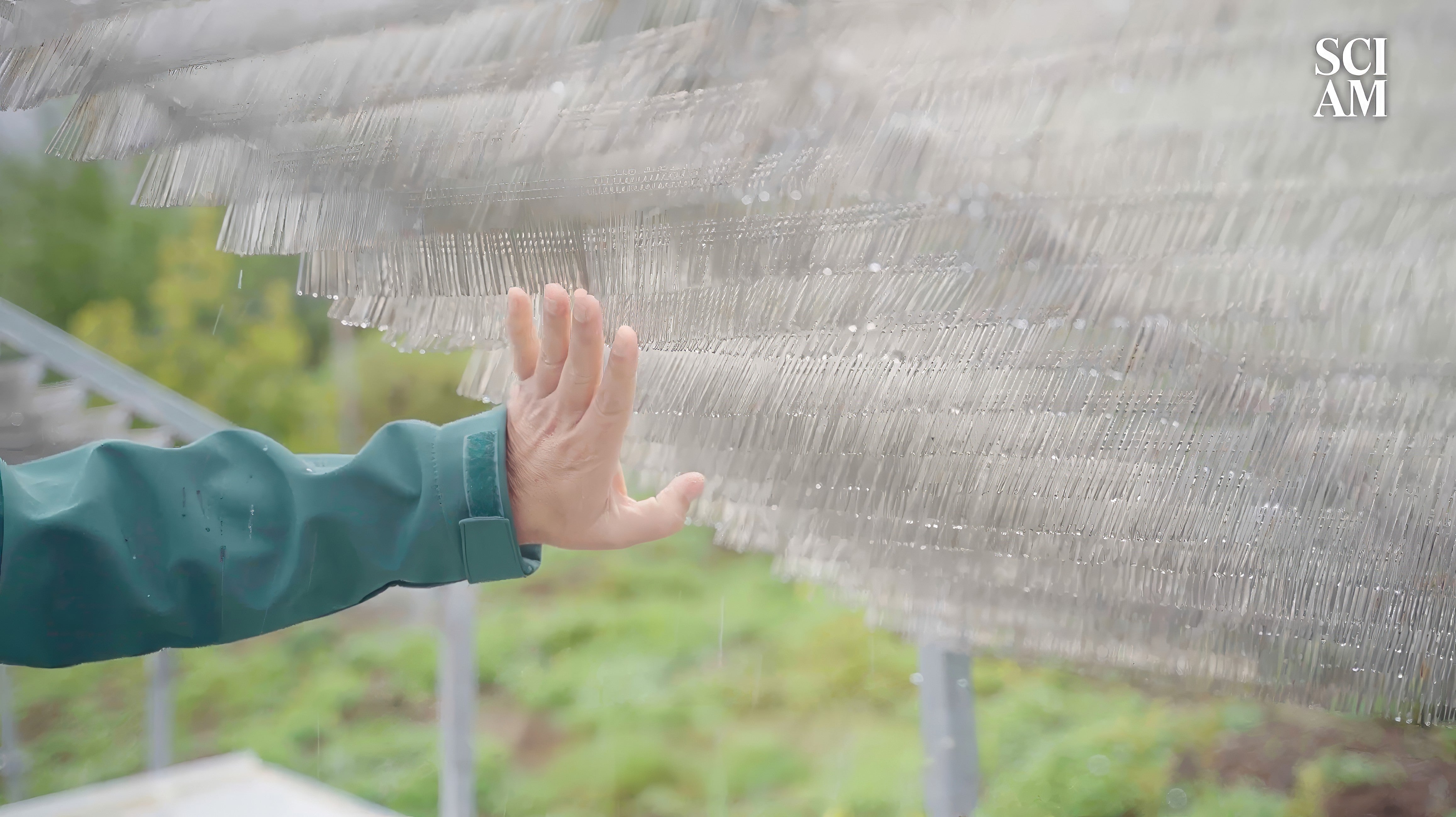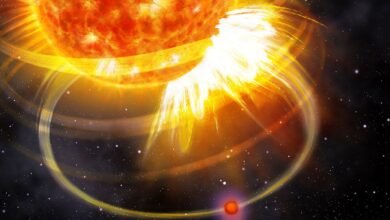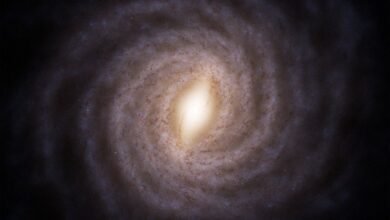

This story was generously supported by a grant from the Pulitzer Center.
TRANSCRIPT
Gustavo Viera Ruiz: The foggy areas of the Canaries support a very special forest, which is Laurisilva.
I mean, we’re talking about a forest that the dinosaurs saw in their day.
Here we have firetree. Thanks to its roots and the symbiosis it has with a fungus, it enriches the soil where it’s planted.
Here we have another type, heather. It makes needle-like leaves.
Look, you can see these lichens. And what this does is increase the surface area. And that greatly increases the amount of water that can be captured from fog. And it permeates the soil.
What happened? The forests have been destroyed and this cycle no longer exists.
What we’re trying to do with this project is to use devices that imitate what the vegetation does.
And use the water collected for environmental restoration work. But if we’re not able to restore these forests, the desert will keep advancing.
And it will snowball. More desert, less water. More issues for the population. More issues for farmers, for biodiversity.
The fog catchers imitate what nature does. But nature always does it much better.
What’s strange about the Canary Islands is that they’re at a latitude that should be desert. We’re right in front of the Sahara Desert. But this archipelago, being in the ocean, on one hand that tempers the temperature.
And on the other hand having trade winds and having altitude makes these humid winds from the north condense when they rise up to the mountains. And in condensing, they form this fog that generates humidity.
There are islands like the island of El Hierro, which is a very young island, only 1 million years old. And it’s very porous volcanic terrain, which means that all the rain that falls is lost.
The indigenous people of El Hierro had a tree that they called the Sacred Tree. And because it was always dripping, they had water and used it for drinking. And those were their own fog catchers where they got water.
Here, as you well know, 500 years ago, the Europeans arrived. And in the conquest of the islands, the deforestation cut off the cycle of water.
Because of our latitude, the process of desertification has advanced quickly. We’ve lost our water resources.
Before there were rivers, now there aren’t. We’ve lost fertile soil.
Starting in the 60s in the Canaries, a new economy began which was tourism.
That meant agriculture and livestock farming was abandoned for a while.
And that means that we find ourselves now in a moment where the vegetation is recovering.
But in those early growth phases, the vegetation is likely to cause fires.
This, combined with climate change during the last few years, has made it so there is less precipitation and more winds from the east, which are very dry winds.
That creates conditions for forest fires.
José Madai Navarro Quintana: What we’re planting is restoring the soil. Because there was a major fire here in 2019 and it razed everything.
Héctor Pérez Navarro: And the summers are more and more hot, more dry.
Normally we arrive. And the first thing we do is check the amount of water that the fog catchers have collected.
Viera Ruiz: We have different types of fog catchers. As you can see, there are different tubes that collect the water from these fog catchers, which goes to a deposit where we store and measure it. And from there the water gets distributed to the work zone.
To talk about this project we have to talk about others before it.
Some animals were introduced, feral goats, which ate the reforestation. So we used metallic mesh to protect the plants. And we saw that every time we added a protector to a plant, they grew very quickly and were very green and beautiful.
As you can see, they are all labeled. We are tracking them to gather statistics. You can see that all the individual fog catchers are alive.
Traditional– one dead, another dead there, another dead.
Upmanu Lall: The population of the Earth was only two billion not that long ago.
So if you go from two to eight billion, and we have also improved our standards of living, that is, our consumption of almost every good on the planet, that means our consumption of water has at least quadrupled.
Maybe gone up by a factor of seven or eight. 97.5 percent of our water is in the oceans and things like that.
So basically we are after freshwater sources. River water is being replenished very rapidly, whereas groundwater is not.
Viera Ruiz: Here in the Canaries, fog catchers are well known because they’ve been installed on various islands for environmental restoration policies. But we always had a lot of issues with them because they broke.
But a few years ago, we got to know the business Nieblagua, which had developed a system that was more expensive, but more wind resistant.
[Sign reads: “FIRE DANGER”]Ricardo Casanova: These are the flat fog collectors, the Chilean type.
The fog collector we use sustains winds of up to 100 km/hour.
We’re about to go there, where that house is.
Casanova (on phone): Yes. How much water do you need?
Casanova: The fog passes through the first layer, the second layer, the third layer, and the fourth layer.
When the water droplets deposit, they go to the base of the fog catcher.
This is the tube that carries water to storage. And then they use this same tube to bring the water to the almonds. It’s about collecting water when it’s there for use when it’s not.
Viera Ruiz: Not all the water used in the reforestation came from fog. We’ve had to use water from other sources. Because, for example, last year the Canaries suffered a major drought.
One of the droughts that have become more and more frequent due to climate change. And one of the most worrying things it brings is the loss of foggy days in this zone.
This is a system that was developed by the Canarian Institute of Agricultural Investigations and the University of La Laguna.
Instead of a mesh system, which is what’s normally used worldwide, they’ve used a system that basically imitates pine needles. And the idea is that with all of this, we can improve the processes. And that these can be implemented in other parts of the world where they’re needed.
Lall: The conditions that would give you the maximum productivity associated with the fog collectors would be a desert-like climate on the ocean. And, coupled with that, if you had a big bluff, so the air has to rise as it comes to the land from the ocean.
That will do it. It’s an interesting thing to do.
So the examples that some people give now are of even stimulating our agriculture. Drip irrigation, basically, into something that is a native plant, so it’s not very thirsty for water.
And the other possibility is that essentially what you’re doing is you’re trying to use this to nurture the seedlings. Then they will find their natural groundwater table.
Viera Ruiz: It’s important to say that on the island of Gran Canaria, the majority of water that’s consumed is desalinated water, water from the sea.
Until the beginning of the last century, all the water came from natural springs, from waterfalls and rivers that were there. But this deforestation caused us to lose these resources.
What you see today is not a product of natural springs, but of, a bit further up, a well, a hose that is sucking water up from the subsoil.
Initially with depths of 50 meters, 30 meters. But today the wells have a depth of 600 meters to find water. Because this overexploitation of resources has made it so that there is less and less water in the subsoil. And what we have done is upset the balance.
What we are now trying to do is return to this balance by restoring the forest, so those aquifers can slowly recover.
This story was generously supported by a grant from the Pulitzer Center.
Source link



